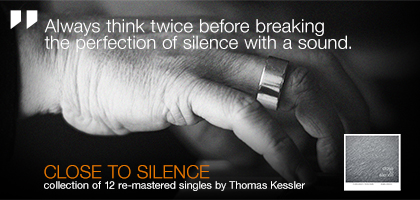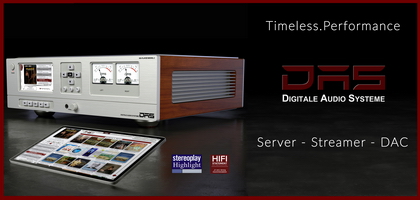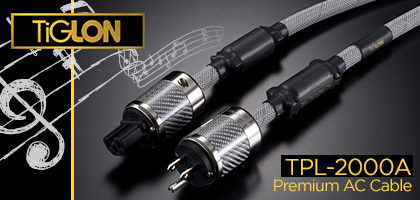No. 239 April 2024
- COVER REVIEW: Muarah MT-3 & MY-1/9 ⸜ turntable & tonearm » POLAND
- KRAKOW SONIC SOCIETY ⸜ meeting № 145: POLSKIE NAGRANIA (Polish Recordings label) on SACD, with Damian Lipiński onboard » POLAND/Kraków
- REVIEW: Carbide Audio CARBIDE BASE ⸜ anti-vibration feet » USA
- REVIEW: Fezz Audio EQUINOX EVO ⸜ digital-to-analog converter » POLAND
- REVIEW: Marton OPUSCULUM OMNI V1.0 ⸜ integrated amplifier » POLAND
- REVIEW: Norma Audio Electronics REVO IPA-80 ⸜ integrated amplifier » ITALY

|
Editorial
Text: WOJCIECH PACUŁA |
 |
No 204 May 1, 2021 |
|
EVEN MORE SECRET LIFE OF AN AUDIO SYSTEM

The "EMPIRE" lists as many as 60 best sequels, among which the first three places are: RIDLEY SCOTT’s Aliens 2 ( 1986), FRANCIS FORD COPPOLA’s The Godfather 2, JAMES CAMERON’s Terminator 2: Judgment Day (1991), and the „Time” magazine offers its list of "35 Sequels That Are Better Than the Originals", which also includes productions from Coppola and Cameron. And so? - You do not have to agree with all the choices of the authors of these articles, but the fact is that it is true that in some cases the second or third part may be better than the original. What causes a sequel to beat the original? - The "Time" in the referenced article suggests:
Fortunately, this doesn't apply to the A Secret Life of Audio Systems. I have no ambition for the second part of the journey deep into my system, focused mainly on the timeline, to beat the first one. Because it's just the same article that for some unknown reason evolved into two parts. 
▬ Under all feet, wherever possible, I put discs of material with piezoelectric properties sold by Acoustic Revive as the CP-4 Writing about the Finite Elemente rack, recalling the stories of anti-vibration platforms and feet, suggesting the end of the search to "adjust" the stands for the Harbeth M40.1 loudspeakers to my expectations, I just wanted to offers you a general picture of the situation, define the status quo which was supposed to fill two or three paragraphs. So why has it evolved into a full-fledged, independent article? - I must admit that I do not know, I do not understand how it happened - it is what it is. And it was supposed to be an introduction to the truly secret life of an audio system, i.e. a short reflection on the changes that we introduce over time. I wanted to share with you my thoughts on topics that do not appear in tests because they cannot be put there. Because they are associated with point in time, with the use of audio products, they slip between the fingers writing the next text, falling into a space that could be called "maybe someday", while the "someday" almost never happens, irrevocably turning into "never" . Let me give you an example of such trivial but burdensome element of my work - I have to switch cables all the time. During one session, when comparing cables that lasts about three hours, I have to do it several or even several dozen times. I have three, four, sometimes five such sessions with a given product. This usually means I need to unplug and plug cables hundreds of times. I also change cables many times while reviewing components, comparing CD players, amplifiers and loudspeakers. I noticed that with time this number decreased, I assume because I get to know my system better and better, I carry its sonic signature in my "head". Nevertheless, we are still talking about an activity that is repeated multiple times. |

▬ When testing interconnects, the transitions between the tested and reference ones must be done as fast as possible, so I fasten them with Velcro; the photo shows interconnects of the Japanese company TiGLON, tested in May And now - to make my life easier, when reviewing interconnects, I fasten them together - a reference cable and a tested one - with Velcro, on both sides. Thanks to this I can quickly switch the cables without having to look for it behind the rack. This is not a perfect solution, because this way I change - not much, but still - the electrical and mechanical properties of the cables. When it comes to high-end, everything "matters" and even such small modifications affect the sound. Which forces me to make a decision: in order for the test to be successful, to keep its methodology, I have to use this solution, thus choosing the lesser evil. By the way - it would be nice if someone came up with a product that would help in such tests. Equally helpful would be something that has been bothering me for years, namely some system for hanging cables behind the system. This is my problem, probably not yours, though ... During tests, it is often the case that I disconnect the interconnect or speaker cable from the device, and its other side remains plugged in. For a long time I tried to fix this escaping tip somehow, hanging it over a rack or devices, or using the, already discussed, Velcro, etc. 
▬ Hooks glued to the wall are a great solution for organizing cables behind the system At one point, however, I came across a not truly innovative, but shockingly innovative idea to me to fix some hooks or hangers, if you will, on the wall behind the audio system. After a few failures - I didn't want to drill into the wall, I used glue - the best solution turned out to be hooks intended for the kitchen, sold at the grocery store where I shop. I paid 12 zlotys for three. This was it! The self-adhesive tape holds it so tightly that even such a heavy cable as the Siltech Triple Crown power cable are safe placed on them. So I put up a few of them and I'm planning on using even more. I am very happy with this solution, from time to time cursing my lack of imagination, which made me wait so many years with it. More and more often, however, I look at these pieces of aluminum attached to the wall and I can see that they do not look too nice. So it would be - nomen omen - nice if one of the audio producers offered such aesthetically pleasing “hangers”, equally easy to attach, and which could also be used for the normal functioning of the system - instead of hanging the cables connecting the devices, they could rest on them. And if, in addition to aesthetics and ergonomics, they also offered a vibration damping function, it would be an ideal product. There are plenty of similar details in my work. I will only mention the Acoustic Revive feet pads that I use wherever I can, a fluid of the same company I use to improve the contact between the plugs, and the SPEC speaker filters, which I connected with Western Electric NOS cables and set them up on additional anti-vibration platforms, although already they stand on the Acoustic Revive stands, or finally on the pads that I put on the player, and on which I put a weight and a remote control, thus protecting the chassis from scratches etc. 
▬ A glance at the system, deeper than before, is enough to see a multitude of Nordost cables connecting the devices and the QKore artificial ground; they seem to beg for some sort of "cable management" system I also have a lot of thoughts on the multitude of Nordost cables connecting the QPoint generators and the QKore artificial ground. I think they need mechanical damping, because now they act a bit like a "transmitter" of vibrations (they are stiff). In addition, I dream of a system that would organize them - a huge number of cables in my system will allow me to create a spider web, and thus to become the Spider-Man ... And I didn't even start to complain that audio cables are not equipped with aesthetic, easy-to-use covers for plugs and components, or mounted on them (AC Acoustic Revive power cables, interconnects and Crystal Cable speaker cables, etc.) that would prevent them from being damaged and looked nice. Well, I am not promising anything but good franchises usually have more than one sequel ... ■ |
About Us |
We cooperate |
Patrons |
|
Our reviewers regularly contribute to “Enjoy the Music.com”, “Positive-Feedback.com”, “HiFiStatement.net” and “Hi-Fi Choice & Home Cinema. Edycja Polska” . "High Fidelity" is a monthly magazine dedicated to high quality sound. It has been published since May 1st, 2004. Up until October 2008, the magazine was called "High Fidelity OnLine", but since November 2008 it has been registered under the new title. "High Fidelity" is an online magazine, i.e. it is only published on the web. For the last few years it has been published both in Polish and in English. Thanks to our English section, the magazine has now a worldwide reach - statistics show that we have readers from almost every country in the world. Once a year, we prepare a printed edition of one of reviews published online. This unique, limited collector's edition is given to the visitors of the Audio Show in Warsaw, Poland, held in November of each year. For years, "High Fidelity" has been cooperating with other audio magazines, including “Enjoy the Music.com” and “Positive-Feedback.com” in the U.S. and “HiFiStatement.net” in Germany. Our reviews have also been published by “6moons.com”. You can contact any of our contributors by clicking his email address on our CONTACT page. |




 |
     |
main page | archive | contact | kts
© 2009 HighFidelity, design by PikselStudio,
projektowanie stron www: Indecity





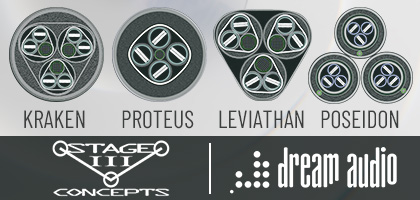
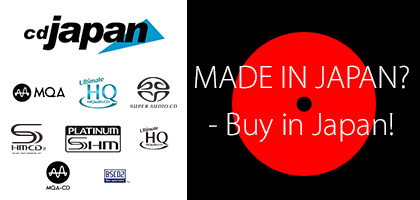
 EQUEL DOESN'T HAVE GOOD PRESS. It is often seen in the context of cynical punching for getting even more money out of the story told in the original work (book, film, game, etc.). It is also often the case that a sequel offers an inferior artistic value. On the other hand though, there were many films were made that started to "live" thanks to sequels, because - it does happens - they were better than the originals.
EQUEL DOESN'T HAVE GOOD PRESS. It is often seen in the context of cynical punching for getting even more money out of the story told in the original work (book, film, game, etc.). It is also often the case that a sequel offers an inferior artistic value. On the other hand though, there were many films were made that started to "live" thanks to sequels, because - it does happens - they were better than the originals. Sequels, that are better than the original build on what the audience already knows and loves about the franchise’s characters. Perhaps the movie throws the hero into a daunting situations that challenges their beliefs or forces them to evolve. Maybe the movie infuses humor in a traditionally tragic series or poignancy in a historically comedic franchise.
Sequels, that are better than the original build on what the audience already knows and loves about the franchise’s characters. Perhaps the movie throws the hero into a daunting situations that challenges their beliefs or forces them to evolve. Maybe the movie infuses humor in a traditionally tragic series or poignancy in a historically comedic franchise.
